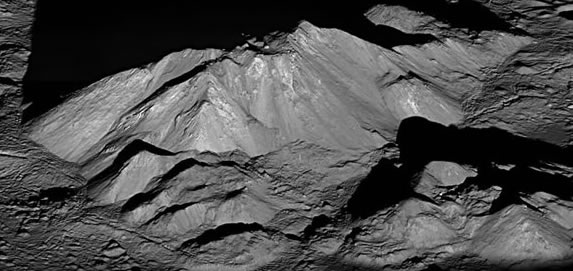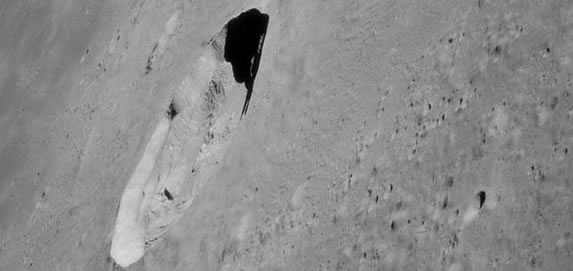Lunar Features
2.5 - Be able to identify the following features on the lunar disc:a - Sea of Tranquility
b - Ocean of Storms
c - Sea of Crises
d - Tycho
e - Copernicus
f - Kepler
g - Apennine mountain range
Mare Tranquillitatis, Sea of Tranquility
Location: Between Mare Serenitatis and Mare Fecunditatis.
Size: 870 km
Features: Its borders are not clear; it is surrounded by some smaller mountain groups as well as small maria called bays. Best known for being the landing site of the first manned landing, Apollo 11.
Oceanus Procellarum, Ocean of Storms
Location: On the western side of the Moon (from the northern hemisphere this would be on the left)
Size: 2,500 km
Features: Largest of lunar mare. Around its edges are small maria 'bays'. Its name comes from a myth that after its appearance comes bad weather on Earth.
Mare Crisium, Sea of Crises
Location: North East (Upper Right)
Size: 555km
Features: Circular flat mare to the north of the Sea of Tranquility with few craters within it. Wrinkle ridges are located near its edges.
Tycho (Crater)
Location: South
Size: 86km diameter, 4.8km depth
Features: 100 million years old so young for a lunar crater. Best seen at full moon where rays of ejecta can be seen emanating from it.
Copernicus (Crater)
Location: Centre-West
Size: 86km diameter, 4.8km depth,
Features: Prominent and easy to find for astronomers as brighter than surrounding landscape slightly hexagonal in shape. Prominent central peak.
Kepler (Crater)
Location: To the west of Copernicus
Size: 32km diameter, 2.6km depth
Features: Landslide material and debris from the crater wall has been observed.
Montes Apenninus, Apennine Range (Mountains)
Location: Centre-North
Size: Approximate length: 600km 5.4km at highest point
Features: An arcing chain of mountains formed 3.9 million years ago, home to numerous craters nestled between mountains.
_small.jpg)
_small.jpg)
_small.jpg)


_2_small.jpg)

_small.jpg)
 | © All Rights Reserved |
| © All Rights Reserved |